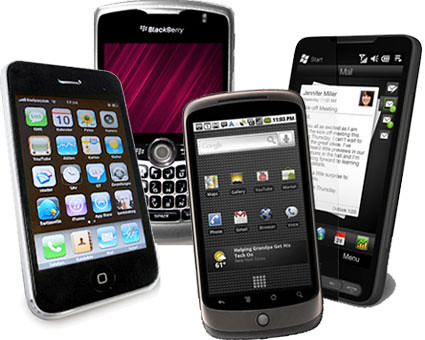3 General Prequisites of Bring Your Own Device
If a school wishes to go down the Bring Your Own Device (BYOD) route, what are the conditions necessary to make this possible in a useful (ie learning enhancing) and hassle-free way?
 Bring Your Own Device, by Personeelsnet http://www.flickr.com/photos/personeelsnet/From my research into schools which have gone down this road, or at least started to, I have come to the conclusion that there are three at least three general conditions which have to be met. At least, all the schools I’ve looked at and which appear to be making a real go of it have met these conditions.
Bring Your Own Device, by Personeelsnet http://www.flickr.com/photos/personeelsnet/From my research into schools which have gone down this road, or at least started to, I have come to the conclusion that there are three at least three general conditions which have to be met. At least, all the schools I’ve looked at and which appear to be making a real go of it have met these conditions.
Here they are.
Highly digital already
In other words, the school, its teaching staff, its admin, its pupils and the senior leadership team are all comfortable with using the technology, which is embedded throughout the school (and sometimes beyond). This is what Mal Lee refers to as “normalised use of the digital”.
This is not a single category, but really a spectrum, ranging from completely paper-based to “networked”, which Mal defines as being where:
the staff have normalised the use of the digital in their everyday teaching and is collaborating authentically with parties outside the school walls and professional teachers in the teaching of the young.
A willingness to experiment
In a sense, this is an aspect of the preceding attribute. If my memory serves me well, I don’t think I have come across a single school that has gone down the BYOD route without also having other interesting things in place. For example, many have some form of digital leaders programme, or have started to look at having Responsible Use Policies rather than Acceptable Use Policies, or have a great approach to teaching and learning. And when I say “or”, I am using it in the Boolean sense, ie the school might have any or all of these things going on, and possibly lots of others not mentioned.
What we’re really talking about, of course, is a particular mind set. It shows itself in the introduction of BYOD itself, in the form of running small-scale pilots rather than upturning everything already in place. The term I use for this kind of school is a “learning institution”, by which I mean, of course, an institution which learns.
Discipline is good
I have to say, advocate though I am for BYOD, I think it would be very difficult to introduce it in a school where the kids were running riot. I have the impression, from my reading and research, that even the description “discipline is good” is unfortunate, because it implies the possibility that discipline could be anything else. It’s more a case of a partnership between students, teachers, parents and even the local community. I don’t have, from my own work, hard and fast evidence of this, but it seems to me to be implied in all the schools I’ve looked at.
Conclusion
What I conclude from all this is that schools have to have reached a particular state of readiness before they can successfully implement a BYOD programme. The bad news is that it isn’t something a school can achieve overnight. The good news is that achieving it is not only possible, but need not even take a long time.
You can read my reports of schools that have started to adopt BYOD by clicking on this link: Bring Your Own Device.
